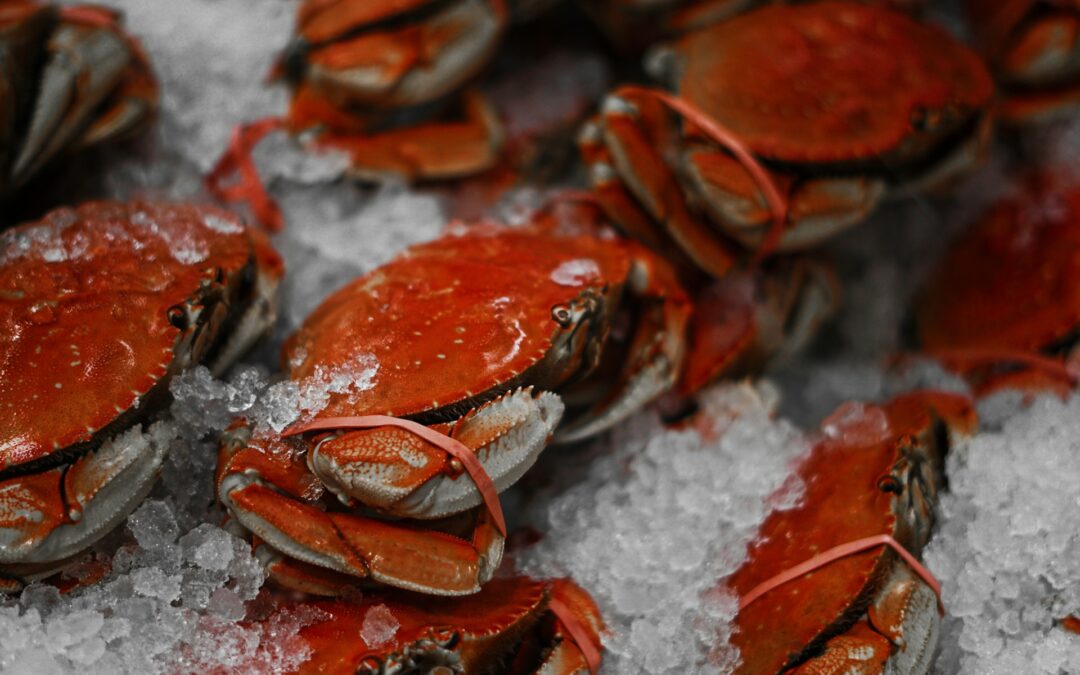Keeping live crab fresh is a delicate dance between maintaining its vitality and preventing spoilage. Whether you’ve just hauled your catch from the ocean or purchased a wriggling crustacean from the market, understanding how long live crab lasts in the fridge is crucial to enjoying a delicious and safe meal. This comprehensive guide delves into the science behind crab storage, providing practical tips and answering your most pressing questions.
Factors Affecting Live Crab Shelf Life
Several factors significantly impact how long your live crab will remain viable in the refrigerator. The most important are the crab’s initial health and the storage conditions. A healthy, active crab will naturally last longer than one that’s already stressed or showing signs of weakness. Proper refrigeration is also paramount, ensuring consistent cold temperatures prevent bacterial growth.
The species of crab also matters. Different species have varying tolerances for temperature and stress. For instance, some species, like Dungeness crab, are known to be hardier and survive longer in cooler conditions than others. Researching the specific needs of your crab species is a proactive step towards extending its lifespan.
Finally, how the crab is handled prior to refrigeration plays a significant role. Rough handling can cause stress, reducing the crab’s overall lifespan. Gentle handling and quick refrigeration are key to maintaining its quality and vitality.
Optimal Storage Techniques for Live Crab
Proper storage is paramount to keeping your live crab alive and fresh. Never store live crab in a sealed container, as this can lead to suffocation and rapid deterioration. Instead, use a well-ventilated container or a crab keeper designed for this purpose. These containers allow for sufficient air circulation, preventing the buildup of harmful gases such as carbon dioxide.
Keep the crab in a cool, dark area of your refrigerator. Aim for temperatures between 33°F and 40°F (0.5°C and 4°C). Avoid placing it near areas with fluctuating temperatures, such as the refrigerator door, where temperature changes can stress the crab. Remember, consistency is key to maintaining its viability.
Avoid overcrowding. Give each crab enough space to move around comfortably. Crabs that are tightly packed together can stress each other, shortening their lifespan. Consider placing a damp cloth (not soaked) at the bottom of the container to maintain some humidity, but avoid excess moisture which can lead to bacterial growth.
Keeping the Crab Moist, But Not Soggy
Maintaining adequate humidity is crucial, but overdoing it can be detrimental. A slightly damp environment mimics their natural habitat and helps prevent them from drying out. Regularly check the dampness level and adjust accordingly. Damp paper towels placed strategically in the container can help maintain this delicate balance, preventing both dryness and excessive wetness.
Signs That Your Live Crab Has Gone Bad
Recognizing when your live crab is no longer safe to eat is crucial to preventing foodborne illness. Several telltale signs indicate that your crab has gone bad, regardless of how long it has been in the fridge. A foul odor is a primary indicator. Spoiled crab will have a distinct, pungent smell, quite unlike the characteristic fresh sea scent.
Inspect the crab’s shell and body for any discoloration or unusual changes. A healthy crab will have a firm shell, and its flesh will be plump and moist. If the shell is soft or broken, or the flesh is mushy or slimy, it’s a sign of spoilage. Additionally, any milky or discolored liquid seeping from the shell indicates bacterial contamination.
Lastly, assess the crab’s reactivity. A live crab will react to stimuli such as touch or light. A lifeless, unresponsive crab is an obvious sign of spoilage and should be discarded immediately. Err on the side of caution; when in doubt, throw it out.
How Long Can Live Crab Really Last? A Realistic Timeline
While there’s no single definitive answer, a well-maintained live crab can typically survive for 1-3 days in the refrigerator. This is a broad estimate, and the actual time frame depends heavily on the factors discussed earlier – the initial health of the crab, the storage conditions, and the species.
If you notice any signs of deterioration, such as a foul odor or soft shell, discard the crab immediately, regardless of how long it’s been in the refrigerator. Don’t risk consuming spoiled seafood; food safety should always be your top priority. Freshness and safety are intertwined— compromising one will inevitably compromise the other.
For optimal freshness and safety, it’s best to cook and consume your live crab within a day or two of purchasing it. Any longer, and the risk of spoilage and bacterial growth increases substantially. This ensures you enjoy the best flavor and texture, and minimizes potential health risks.
Beyond the Refrigerator: Alternative Short-Term Storage
In situations where refrigeration isn’t immediately accessible, there are alternative, albeit temporary, storage solutions. One approach is to store the crab in a cool, shaded area. This is only a short-term solution (a few hours at most), and the crab needs to be kept in a well-ventilated container away from direct sunlight or extreme temperatures.
Bear in mind that these alternatives are strictly for emergencies and temporary solutions. Refrigeration remains the optimal method for preserving live crab for any period exceeding a few hours. Prolonged exposure to warmer temperatures rapidly accelerates the spoilage process and increases the risk of bacterial contamination.
Conclusion: Prioritize Freshness and Safety
Knowing how long live crab lasts in the fridge is about more than just extending its lifespan; it’s about ensuring food safety and enjoying the best possible culinary experience. By understanding the critical factors affecting crab storage and implementing proper techniques, you can maximize the freshness and quality of your live crab, leading to a delicious and safe meal. Remember, when in doubt, always err on the side of caution and discard any crab showing signs of spoilage.

